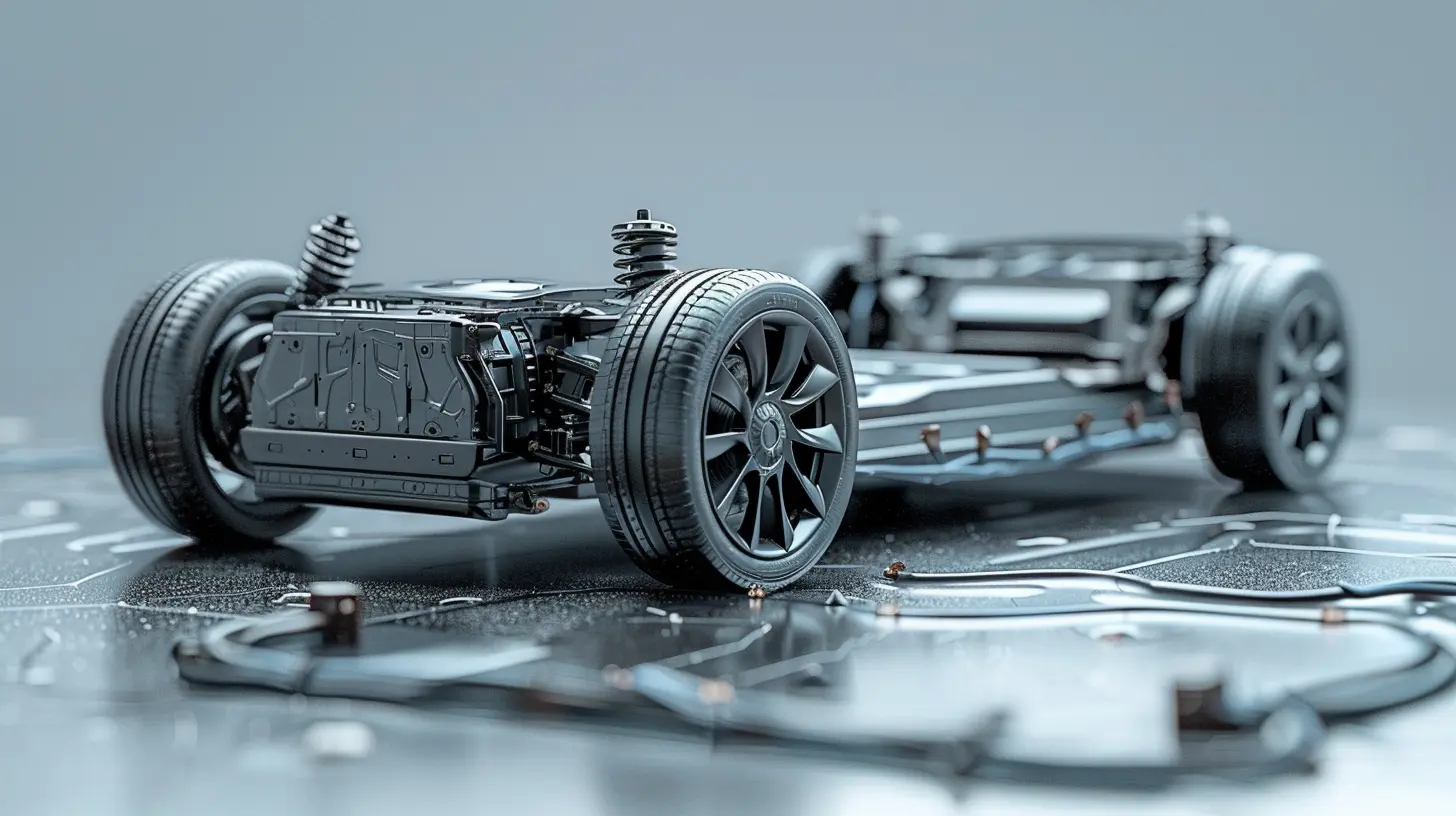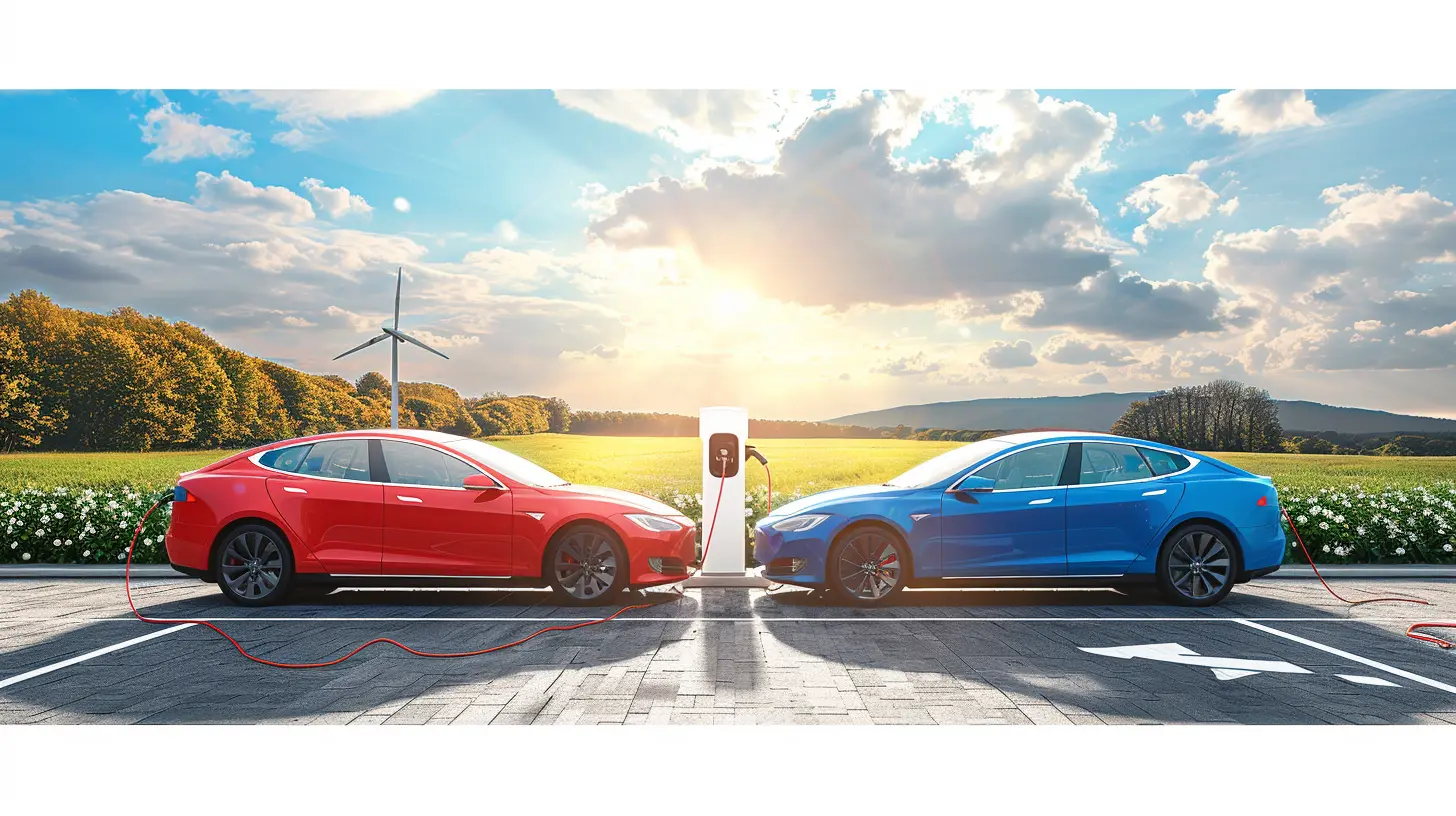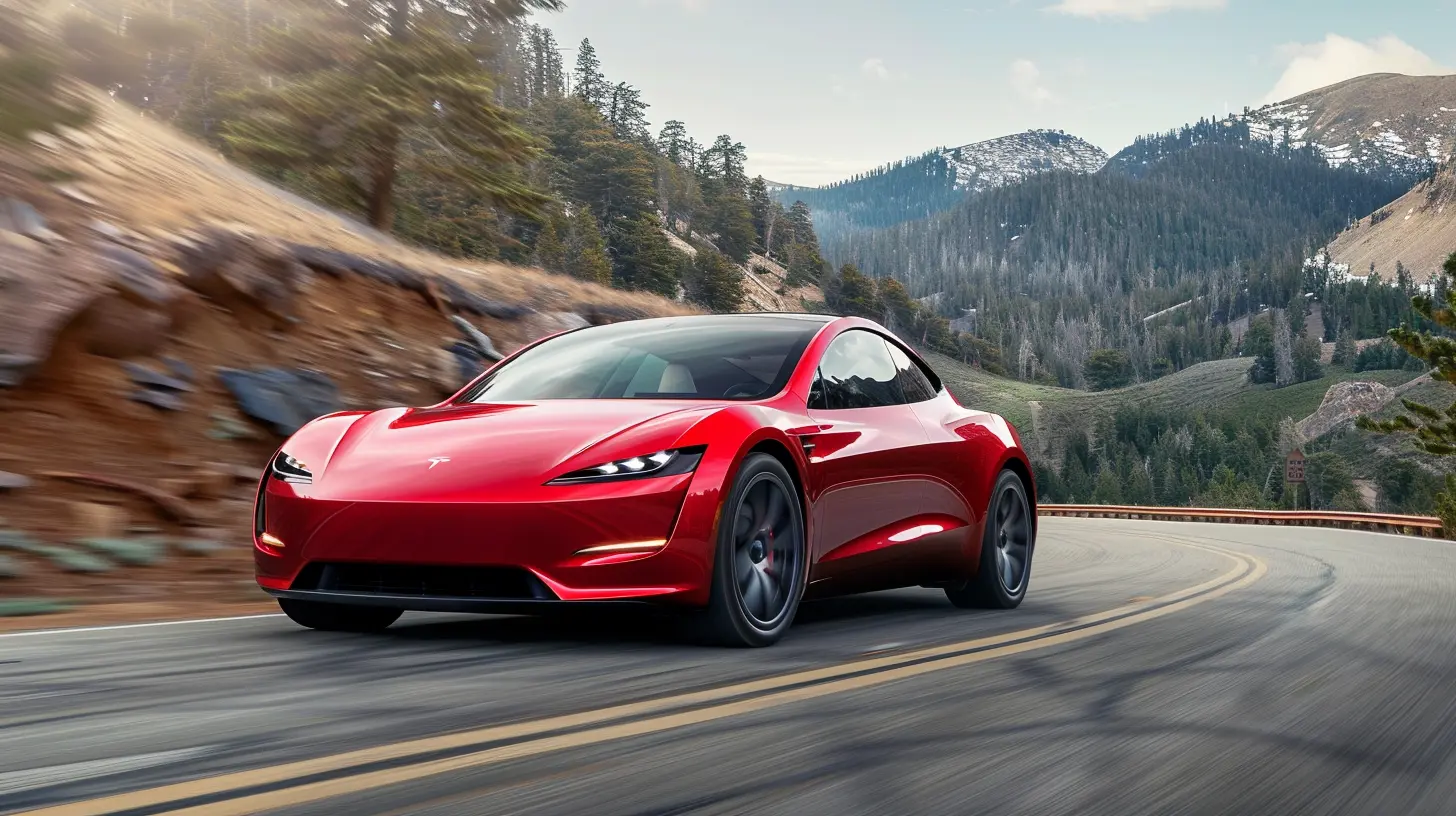Electric Vehicle Myths: What’s True and What’s Not?
5 June 2025
Electric vehicles (EVs) have been in the spotlight for quite a while now. From news headlines to dinner table talks, everyone seems to have an opinion. Some sing praises of the silent, sleek machines that glide without gas. Others? Well, they're still skeptical, and not without reason — or so they think.
You’ve probably heard someone say, “EVs don’t work in the cold,” or “They cost a fortune!” But how much of this is fact, and how much is just loud myths floating around? Buckle up, because we’re about to hit the accelerator and speed through the top electric vehicle myths — debunking them one by one.
Myth #1: EVs Don’t Have Enough Range
Let’s be honest, range anxiety is real — or at least it used to be. Early electric cars had limited battery life, and charging stations were few and far between. But folks, it’s not 2010 anymore.The Reality:
Today's EVs can go the distance — literally. Vehicles like the Tesla Model S, Lucid Air, and even more budget-friendly options like the Hyundai Ioniq 5 or Chevy Bolt offer well over 250+ miles on a full charge. Some go well beyond 300 or even 400 miles.And unless your daily commute rivals a road trip across state lines, chances are you won’t run out of juice anytime soon.
Think about it: Most of us don’t drive more than 30-50 miles a day. So if your EV can go 300 miles, that’s almost a full week of driving without needing a recharge.
Myth #2: Charging Takes Forever
Ever heard someone moan, "But what if I need to charge it for hours during a road trip?" It’s a common concern, especially among those used to gas stations and five-minute fill-ups.The Reality:
Charging tech has come a long way — and it’s still improving fast.- Standard home chargers (Level 2) can fully charge an EV overnight. So while you sleep, your car gets fueled up for the next day.
- Fast chargers (DC Fast Charging) can give you 80% charge in about 15 to 30 minutes, depending on your model.
Sure, it’s not as fast as pumping gas, but EV drivers usually don’t wait until empty to recharge. They top off whenever it’s convenient — like plugging in their phones. Plus, with charging stations popping up at malls, restaurants, rest stops, and even offices, charging is just getting easier.
Myth #3: EVs Aren’t Really Green Because Electricity Comes From Fossil Fuels
Ah, the classic "is it really better for the environment?" argument. If the electricity comes from coal or natural gas, how green can it be?The Reality:
EVs are cleaner, even on a coal-powered grid.Yes, some electricity still comes from fossil fuels. But here’s the kicker: EVs are far more energy-efficient than internal combustion engines (ICEs). That means even if your EV is powered by “dirty” electricity, it still emits less CO₂ over its lifetime.
And better yet? The grid is getting greener every year. Solar, wind, and other renewable sources are on the rise. So as the power grid evolves, EVs automatically become even more eco-friendly — without you needing to lift a finger.
Think of it this way: buying an EV is like getting a computer that gets faster every year — without upgrading the hardware.
Myth #4: EVs Are Too Expensive
Yes, the sticker shock hits hard at first. But let’s not stop there — let’s look under the hood (pun intended).The Reality:
EVs may seem pricey upfront, but they're more affordable in the long run.Here’s why:
- Fuel Savings: Electricity is cheaper than gasoline. Period.
- Maintenance: Fewer moving parts mean fewer things to break. No oil changes, no engine issues, and no timing belts to replace.
- Incentives: From federal tax credits to state rebates, there’s a bunch of financial help available.
- Used EV Market: It's growing fast! Great deals are popping up, making EVs more accessible.
So while you might pay a bit more initially, you’ll likely save thousands over the life of the vehicle.
Myth #5: EV Batteries Wear Out Fast and Cost a Fortune to Replace
We get it. Batteries don’t have the same reputation for longevity as, say, a diesel truck engine. But let’s crack this myth wide open.The Reality:
EV batteries are built to last — and most come with robust warranties.Most manufacturers offer battery warranties covering 8 years or 100,000 miles (sometimes even more). And in real-world use? Many EV batteries are still going strong after a decade. Plus, battery tech is improving every year, with smarter charging systems and better materials.
And here’s a little-known fact: even if an EV battery’s capacity drops, it doesn’t stop working. It just holds a bit less charge. It’s not like a smartphone that suddenly dies at 20%.
Picture EV batteries like human stamina — you might not run quite as far at 60 as you did at 20, but you’re still moving strong.
Myth #6: EVs Are Not Suitable for Cold Weather
Got snow? Worried your EV won’t make it through winter? You’re not alone.The Reality:
EVs do perform differently in cold climates, but they’re far from helpless.Yes, cold temps can reduce range. That’s because heating the cabin (with no engine heat source) eats up battery power. But gas cars also lose efficiency in winter — it’s just less noticeable.
Modern EVs are built with winter in mind:
- Battery preconditioning warms the battery before driving.
- Heated seats and steering wheels reduce cabin heat demands.
- All-wheel drive (AWD) EVs handle snow like a pro.
And here’s a neat perk: EVs start instantly in freezing temps, with zero engine cranking. No more praying your frozen car battery will start at 6 a.m.
Myth #7: There Aren’t Enough Charging Stations
“I’d love to go electric, but where would I charge it?” If that’s what’s holding you back, let’s set the record straight.The Reality:
Charging stations are multiplying — fast.As of 2024, there are over 150,000 public charging stations in the U.S., and new ones are coming online every single day. Combine that with at-home charging and you’ve got more options than you think.
Apps like PlugShare, ChargePoint, and even Google Maps make it easy to locate chargers near you. Plus, EVs themselves have built-in navigation to guide you to the nearest plug.
The best part? You start with a “full tank” every morning if you charged overnight. When’s the last time your gas car did that?
Myth #8: EVs Are Only for Tech-Savvy People
Some folks still think EVs are like driving a spaceship — all touchscreens, apps, and confusion. If you’re not a Silicon Valley coder, how can you possibly manage?The Reality:
If you can drive a regular car and use a smartphone, you can drive an EV.Sure, there's a learning curve — like knowing how charging works or using regenerative braking. But automakers have made EVs super user-friendly. In fact, many owners say they’re easier to drive than gas cars.
No gears to shift, no engine noise — just press the pedal and go. Driving an EV is like switching from a flip phone to a smartphone: once you do, you wonder how you ever lived without it.
Myth #9: EVs Are Dangerous in Accidents
We hear this one a lot: “A big battery? Isn’t that gonna explode in a crash?”The Reality:
EVs are just as safe — if not safer — than traditional cars.Major EV models undergo the same crash testing and safety protocols as gas cars. Many even earn top safety ratings from the NHTSA and IIHS.
And about the battery fires? Yes, they can happen, but they’re extremely rare — and statistically no more common than fires in gas-powered vehicles (which also catch fire, by the way).
Bottom line: EVs are built to protect you. Just like any other car.
Driving Into the Future: Debunking, Believing, and Embracing Change
Change is always met with resistance. Heck, people once thought the telephone would never replace letters. Today? We’re texting emojis to express emotions.Electric vehicles are more than a trend — they’re part of a broader evolution in how we move, how we treat our planet, and how we spend our money. Of course, there are still improvements to make, and no vehicle type is perfect for everyone.
But the flood of myths? Most of them don’t hold water.
So if you've been on the fence about EVs because of something your cousin’s friend’s mechanic said in passing — maybe it’s time to take another look. The future isn’t coming… it’s parked right next to you at the grocery store.
Conclusion: The Road Ahead
When it comes to electric vehicles, myths are like speed bumps — they slow down the journey, but they don’t stop it.In reality, EVs are practical, affordable, and increasingly earth-friendly. They're quiet, efficient, and surprisingly fun to drive.
If we peel back the layers of misunderstanding, what we find is a movement powered not just by batteries, but by people — people willing to think differently, try something new, and move forward.
The road to a cleaner future doesn’t just start with a policy or a product — it starts with us. So let’s leave the myths in the rear-view mirror and drive boldly into a smarter, greener tomorrow.
all images in this post were generated using AI tools
Category:
Electric VehiclesAuthor:

Ugo Coleman
Discussion
rate this article
3 comments
Harley McGinnis
Debunking EV myths is crucial for informed consumer decisions.
June 15, 2025 at 3:50 AM

Ugo Coleman
Absolutely! Clarifying these myths empowers consumers to make informed choices and embrace the benefits of electric vehicles.
Willow Forbes
Great summary! Dispelled myths are crucial for understanding EV benefits and accelerating adoption effectively.
June 14, 2025 at 10:31 AM

Ugo Coleman
Thank you! I'm glad you found the summary helpful in clarifying misconceptions about EVs. Understanding the facts is key to embracing their benefits!
Primrose Adkins
Understanding electric vehicles requires separating fact from fiction. While myths can cloud perceptions, informed discussions help illuminate their benefits, such as reduced emissions and lower long-term costs. Embracing this technology can drive sustainable change, making it essential to approach these narratives with curiosity and an open mind.
June 8, 2025 at 5:01 AM

Ugo Coleman
Thank you for your insightful comment! You're right—distinguishing fact from fiction is key to understanding the true benefits of electric vehicles. Embracing informed discussions can indeed foster a more sustainable future.



